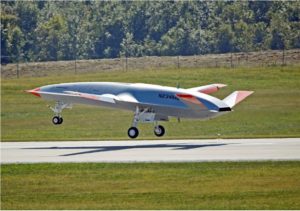
Boeing [BA] and the Navy completed the first test flight of the company’s MQ-25 Stingray unmanned aerial refueler test asset on Aug. 19. The Boeing test asset, named T-1, conducted an autonomous two-hour flight under Boeing test pilots operating from a ground control station at the MidAmerican St. Louis Airport in Mascoutah, Ill. The T-1 completed an autonomous taxi and takeoff, then flew a pre-determined route to validate its basic flight functions and operations with the ground control station. Boeing…

 By
By 











